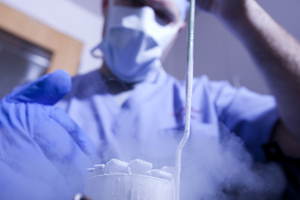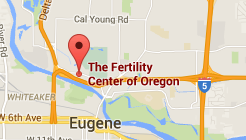
Over the past 25 years, human reproductive science has gone from exploration and experimentation to pregnancy rates as high as 65 percent in initiated cycles. Since the addition of in vitro fertilization (IVF) technology at The Fertility Center of Oregon, the residents of Southern and Central Oregon have access to a regional resource center for comprehensive fertility services.
Essentially, there is no reproductive challenge that we cannot overcome. Sterilization of one or both partners, post-reproductive age women requiring egg donors and severe male-factor infertility are a few of the situations we successfully treat.
IVF begins with treatment of hormone therapy (ovulation induction) to stimulate multiple eggs to maturity. Once the eggs are large enough to harvest the doctor will retrieve them by guided ultrasound under anesthesia.
The next step involves combining both eggs and sperm via either conventional IVF, which is putting many sperms with an egg. Another way of IVF involves Intracytoplasmic Sperm Injection (ICSI) a method in which a single sperm is injected into the mature egg to achieve fertilization.
When the embryos are approximately three to six days, usually one to two of the healthiest embryos will be transferred into the recipient uterus. Any remaining embryos are available to cryopreserve for future use.
Oocyte Cumulus Cell complex. Sperm are breaking away the cells to obtain access to the zona of the oocyte for penetration and fertilization.
Oocyte moved into focus. Sperm comes to the tip of the needle. Needle is inserted into the oocyte. Pressure is applied to pull back cytoplasm and sperm until cytoplasm rushes into the needle. Pressure then applied to needle to push or inject cytoplasm and sperm into the oocyte.

